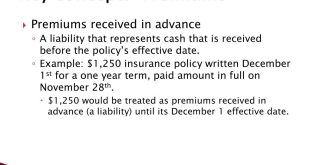Absolutely, insurance is indeed a broad field with a wide range of products, services, and concepts. Here’s a more detailed breakdown of various aspects of the insurance industry to help you navigate its complexity:
1. Major Branches of Insurance
A. Personal Insurance
- Health Insurance
- Types: Individual Health Insurance, Family Floater Plans, Critical Illness Insurance, Dental Insurance.
- Purpose: Covers medical expenses, preventive care, and emergency medical situations.
- Providers: Private insurers, employer-provided plans, government programs (like Medicare or Medicaid).
- Auto Insurance
- Types: Liability Coverage, Collision Coverage, Comprehensive Coverage, Uninsured/Underinsured Motorist Coverage.
- Purpose: Covers damage to vehicles, liability for injury or damage, and theft.
- Home Insurance
- Types: Homeowners Insurance, Renters Insurance, Condominium Insurance, Landlord Insurance.
- Purpose: Protects against damages to the home, personal property, and liability for accidents on the property.
- Life Insurance
- Types: Term Life Insurance, Whole Life Insurance, Universal Life Insurance, Variable Life Insurance.
- Purpose: Provides financial support to beneficiaries after the policyholder’s death.
- Disability Insurance
- Types: Short-Term Disability Insurance, Long-Term Disability Insurance.
- Purpose: Offers income replacement if you’re unable to work due to illness or injury.
- Travel Insurance
- Types: Trip Cancellation Insurance, Medical Travel Insurance, Baggage Insurance.
- Purpose: Covers travel-related risks such as trip cancellations, lost luggage, and medical emergencies abroad.
B. Commercial Insurance
- Property Insurance
- Types: Commercial Property Insurance, Business Interruption Insurance, Equipment Breakdown Insurance.
- Purpose: Covers damage to business property and loss of income due to disruptions.
- Liability Insurance
- Types: General Liability Insurance, Professional Liability Insurance, Product Liability Insurance.
- Purpose: Protects businesses against legal claims from injuries, damages, or errors.
- Workers’ Compensation Insurance
- Purpose: Provides benefits to employees who are injured or become ill due to work-related conditions.
- Commercial Auto Insurance
- Purpose: Covers vehicles used for business purposes, including trucks and company cars.
- Cyber Insurance
- Types: Data Breach Insurance, Cyber Liability Insurance.
- Purpose: Protects against losses from cyberattacks, data breaches, and other digital threats.
C. Specialty Insurance
- Umbrella Insurance
- Purpose: Provides additional liability coverage above and beyond standard policies.
- Pet Insurance
- Types: Accident Coverage, Illness Coverage, Wellness Plans.
- Purpose: Covers veterinary expenses for pets.
- Flood Insurance
- Types: Standard Flood Insurance, Excess Flood Insurance.
- Purpose: Covers damages caused by flooding, which is not typically included in standard home insurance policies.
- Title Insurance
- Purpose: Protects against financial loss from defects in property titles.
2. Key Concepts in Insurance
A. Premiums and Costs
- Premium: Regular payment made to maintain the insurance policy.
- Deductible: Amount you pay out of pocket before insurance coverage begins.
- Copayment (Copay): Fixed amount paid for specific services or medications.
- Coinsurance: Percentage of costs you share with the insurer after meeting the deductible.
B. Policy Components
- Coverage Limits: Maximum amount the insurer will pay for a claim.
- Exclusions: Specific conditions or situations not covered by the policy.
- Beneficiaries: Individuals or entities that receive benefits from the insurance policy.
C. Claims Process
- Claim: A request for payment from the insurance company based on a covered loss.
- Adjustment: The process of determining how much the insurer will pay for a claim.
- Settlement: The final amount paid out to cover the claim.
3. Insurance Regulation and Trends
A. Regulation
- Regulatory Bodies: Insurance regulations are enforced by state or national insurance commissions and regulatory authorities.
- Regulations: Focus on consumer protection, financial stability of insurers, and market conduct.
B. Emerging Trends
- Insurtech: Technology-driven innovations in insurance, such as digital claims processing and AI-driven underwriting.
- Personalization: Tailored insurance policies based on individual needs and behaviors.
- Climate Change: Development of insurance products and strategies to address environmental risks.
4. Getting Started with Insurance
A. Research
- Understand Your Needs: Evaluate what risks you need to cover based on your personal or business situation.
- Compare Policies: Look at different insurance products, coverage options, and costs.
B. Choosing a Policy
- Read the Fine Print: Ensure you understand all terms, conditions, and exclusions.
- Consult Experts: Seek advice from insurance agents or brokers for professional guidance.
C. Regular Reviews
- Annual Reviews: Reassess your coverage needs regularly to ensure they align with your current situation.
5. Resources for Learning More
- Websites: Insurance Information Institute (III), National Association of Insurance Commissioners (NAIC), Investopedia Insurance Section
- Books: “The Complete Guide to Insurance” by B.C. Hughes, “Insurance for Dummies” by Jack Hungelmann.



